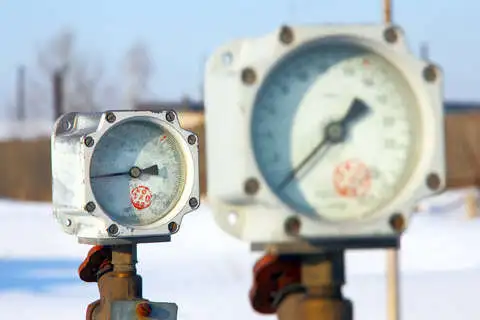Chemical Gas Monitoring Standards

Chemical Gas Monitoring Standards address techniques for the continuous measurement and analysis of chemical gas emissions. The specification of recommended selection, design, manufacture, and certification of measurement instrumentation and methods of application is included. Furthermore, these standards outline the main principles concerning the measurement of radioactivity in discharged gaseous effluents, those present in the environment itself, and those found in the workplace. Acceptable procedures applicable to gas measurement through aerosol effluent, noble gas effluent, iodine, and tritium monitors are included.
SAE J 254-2011 (SAE J254-2011)
Instrumentation and Techniques for Exhaust Gas Emissions measurement ( Stabilized: Jun 2011 )
This SAE Recommended Practice establishes uniform laboratory techniques for the continuous and bag-sample measurement of various constituents in the exhaust gas of the gasoline engines installed in passenger cars and light-duty trucks. The report concentrates on the measurement of the following components in exhaust gas: hydrocarbons (HC), carbon monoxide (CO), carbon dioxide (CO2), oxygen (O2), and nitrogen oxides (NOx). NOx is the sum of nitric oxide (NO) and nitrogen dioxide (NO2). A complete procedure for testing vehicles may be found in sAE J1094.
IEC 62302 Ed. 1.0 b:2007
Radiation protection instrumentation - Equipment for sampling and monitoring radioactive noble gases
"Is applicable to equipment used for sampling and continuous measurement of radioactive noble gases in the workplace, in gaseous effluents discharged into the environment as well as in the environment itself. Monitoring by definition is the process of continuous and real-time measurement. The processes of sampling or taking samples for retrospective laboratory analysis are covered as well."
IEC 60951-2 Ed. 2.0 b:2009
Nuclear power plants - Instrumentation important to safety - Radiation monitoring for accident and post-accident conditions - Part 2: Equipment for continuous off-line monitoring of radioactivity in gaseous effluents and ventilation air
"IEC 60951-2:2009 provides general guidance on the design principles and performance criteria for equipment for continuous off-line monitoring of radioactivity in gaseous effluents and ventilation air used in nuclear power plants for accident and post-accident conditions. General requirements for technical characteristics, test procedures, radiation characteristics, electrical, mechanical, and environmental characteristics are given in IEC 60951-1. These requirements are applicable in this part unless otherwise stated. The main technical changes with regard to the previous edition are as follows: - clarify the definitions; - up-date the references to new standards published since the first edition; - update the units of radiation."
BS EN 13625:2002
Non-destructive testing. Leak test. Guide to the selection of instrumentation for the measurement of gas leakage (British Standard)
This European Standard specifies criteria for the selection of equipment for the leak detection methods described in EN 1779. The minimum requirements for the performance of the instruments used are also given as a guideline for personnel involved in testing. The definite selection of an instrument for a given test is within the responsibility of a qualified operator (at minimum level 2 qualification - see EN 473).
IEC 60761-1 Ed. 2.0 b:2002
Equipment for continuous monitoring of radioactivity in gaseous effluents - Part 1: General requirements
Lays down mandatory general requirements and gives examples of acceptable methods for equipment for continuous monitoring of radioactivity in gaseous effluents. Specifies general characteristics, general test procedures, radiation, electrical, safety and environmental characteristics and the identification and certification of the equipment.
IEC 60761-2 Ed. 2.0 b:2002
Equipment for continuous monitoring of radioactivity in gaseous effluents - Part 2: Specific requirements for radioactive aerosol monitors including transuranic aerosols
Establishes specific standard requirements, including technical characteristics and general test conditions, and gives examples of acceptable methods for aerosol effluent monitors.
IEC 60761-3 Ed. 2.0 b:2002
Equipment for continuous monitoring of radioactivity in gaseous effluents - Part 3: Specific requirements for radioactive noble gas monitors
Lays down specific standard requirements, including technical characteristics and general test conditions, and gives examples of acceptable methods for noble gas effluent monitors.
IEC 60761-4 Ed. 2.0 b:2002
Equipment for continuous monitoring of radioactivity in gaseous effluents - Part 4: Specific requirements for radioactive iodine monitors
Lays down specific standard requirements, including technical characteristics and general test conditions, and gives examples of acceptable methods for iodine monitors.
IEC 60761-5 Ed. 2.0 b:2002
Equipment for continuous monitoring of radioactivity in gaseous effluents - Part 5: Specific requirements for tritium monitors
Establishes specific standard requirements, including technical characteristics and general test conditions and gives examples of acceptable methods for the tritium effluent monitors.





